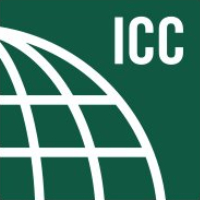
Significant changes to the 2018 I-Codes
The 2018 Significant Changes guides are available for the International Building, Residential, Fire, Plumbing, Mechanical and Fuel Gas Codes. This valuable series can help any code user save time by zeroing in on the most critical changes in the 2018 International Codes (I-Codes). The Code Council’s technical experts provide summaries, analysis and graphics for these changes making them clear and easy to understand.
2018 International Building Code
A modification to Section 1013.2 (Floor Level Exit Sign Location) states that the permitted location for low-level exit signs selectively required in Group R-1 occupancies has been expanded to now allow the bottom of such sign to be mounted up to 18 inches above the floor.
To help guide occupants of Group R-1 guest rooms to the exits during emergency conditions, additional exit signs are required within the egress system serving the guest rooms. Limiting the application to the egress system serving the guest rooms of hotels and other Group R-1 occupancies recognizes the transient nature of building’s use, the often-delayed response to emergency conditions, and the typical low ceiling height in the corridors.
The bottom of the required low-level exit signs is now permitted to be located between 10 and 18 inches of the floor level. The additional 6 inches now available provides sufficient flexibility for designers and owners without adversely impacting the level of life safety of the occupants of the Group R-1 occupancies because the low-level exit signs will still be visible below the smoke layer from a fire (in the zone in which the occupants would presumably be crawling).
Click here to read the full significant change.
2018 International Fire Code
An addition to Section 1105.6.2 (Fire-protection-rated Doors in Existing Group I-2) states that fire-protection-rated doors in existing Group I-2 occupancies have three options for automatic closing operations.
This revision provides options for existing doors in fire barrier walls, fire walls and smoke barriers. This section applies to the doors that provide opening protection and are automatic closing upon release of a hold-open device. Doors that are self-closing are not affected by this section.
The three options specify that the doors release upon activation of the smoke detector located adjacent to the doors, activation of a fire alarm device within the fire alarm zone within which the doors are located, or the operation of the fire sprinkler system protecting the area within which the doors are located.
Click here to read the full significant change.
2018 International Residential Code
A modification to Section R802.1.5.4 (Labeling) states that each stick of fire-retardant-treated (FRT) lumber and each FRT wood structural panel require a label with eight specific items of information.
There are products in the marketplace on which lumber and panel manufacture labels required by Section R802.1.1 and R803.2.1 have been obscured. The 2018 IRC Section R802.1.5.4 clarifies the intent to have fire-retardant-treated wood (FRTW) have two labels: one for the general grading and identification of the lumber or panel, the second for the fire-retardant treatment. The updated provision also explicitly states that each piece of lumber must be labeled with both marks. There are currently products on the market with a stamp on only the top sticks of lumber or plywood in a banded bundle. This change allows easy identification of all lumber on the job site by having two stamps on every stick and panel.
Click here to read the full significant change.
2018 International Plumbing Code Code
A modification to Section 602.3.1 (Standard for Water Well Construction) states that where local regulations for the construction of water wells do not exist or are lacking in details, the code requires well construction to comply with Standard NGWA-01.
In some areas, the construction of an individual water supply such as a well, is either not regulated or is minimally regulated. The standard NGWA-01 provides the necessary requirements to address all of the pertinent details that should be considered when constructing a well to ensure safe construction. The addition of the standard to the code is not intended to override any state or local laws regarding the construction of individual water supplies. The standard is to be applied to fill in and improve any regulations that are already in place.
Click here to read the full significant change.







